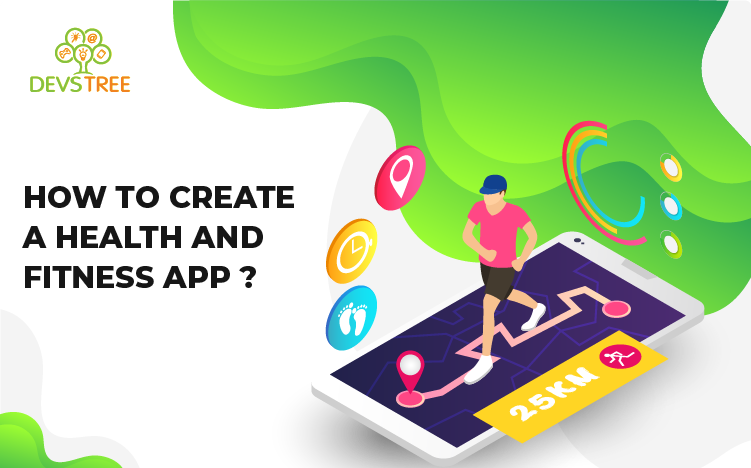
Introduction: Health and fitness apps have become increasingly popular in recent years, as more people are focusing on their well-being and adopting healthier lifestyles. These apps can provide many features and functionalities, such as tracking physical activity, monitoring nutrition, offering workout plans, providing coaching and motivation, and more. In this blog, we are creating an overview of creating a health and fitness app and the average Fitness app Development Cost. This comprehensive 7-step guide will provide you with a roadmap to get started.
Step 1: Determine the Purpose of Your App and the Target Audience
The first step in creating a health and fitness app is to clearly define its purpose and identify your target audience. What specific problem or need does your app aim to address? Who is your ideal user? Understanding your app’s purpose and target audience will help you shape its features and functionalities, as well as its overall design and user experience.
Step 2: Choose Your App Platform
Next, you need to decide on the platform for your health and fitness app. Will it be a mobile app for iOS, Android, or both? Alternatively, you may consider developing a web-based app that can be accessed through a browser. Each platform has its own advantages and limitations, so choose the one that aligns with your app’s purpose and target audience.
Step 3: Conduct Market Research
Market research is crucial to understand the competitive landscape and identifying opportunities for your health and fitness app. Look for similar apps in the market and analyze their features, user ratings, reviews, and pricing models. This research will help you identify gaps and areas where your app can stand out.
Step 4: Plan Your App’s Features and Functionalities
Based on your app’s purpose, target audience, and market research, you can now plan the features and functionalities of your health and fitness app. Some common features include activity tracking, nutrition tracking, workout plans, coaching and motivation, social sharing, and more.
Step 5: Design the User Interface and User Experience
The user interface (UI) and user experience (UX) of your app are critical to its success. Your app should be visually appealing, easy to navigate, and provide a seamless and enjoyable user experience. Hire a skilled designer or use design tools to create wireframes and prototypes that showcase your app’s UI and UX. To obtain feedback and develop improvements, test these prototypes with potential users.
Step 6: Develop and Test Your App
Once you have finalized the design, it’s time to develop your health and fitness app. Hire Fitness app developer from an experienced Fitness app development Company or use a reliable app development platform to bring your app to life. Once your app is developed, thoroughly test it on different devices and operating systems to ensure it works smoothly and as intended.
Step 7: Launch and Market Your App
After rigorous testing, it’s time to launch your health and fitness app. Submit it to the app stores (e.g., Apple App Store, Google Play Store) and optimize your app’s metadata (e.g., title, description, keywords) to improve its discoverability. Develop a marketing plan to promote your app, which may include digital marketing, social media campaigns, influencer partnerships, and more.
Here are Some Extra Pointers to Keep in Mind:
Ensure Data Privacy and Security: Health and fitness apps often collect sensitive user data, such as personal information, health metrics, and workout data. It’s crucial to prioritize data privacy and security to protect your users’ information. Follow industry best practices for data encryption, authentication, and authorization to ensure the confidentiality and integrity of user data.
Offer personalized Experiences:
Consider incorporating features that allow users to set personalized goals, receive tailored recommendations, and track their progress based on their individual needs and preferences. Personalization can enhance user engagement and retention.
Implement social sharing Features:
Social sharing features can enhance the social aspect of your app and encourage users to share their achievements, progress, and challenges with their friends and peers.
Provide Excellent Customer Support:
Good customer support is crucial for user satisfaction and retention. Ensure that your app has robust customer support channels, such as in-app chat, email, or phone support, to assist users with any issues, inquiries, or feedback they may have.
Conclusion:
Creating a health and fitness app requires careful planning, design, development, and marketing. By following this 7-step guide, you can create a compelling app that caters to the needs of your target audience and provides value to your users with the help of an App development company UK or any well-known Mobile app development company in London.
Remember to continuously iterate and improve your app based on user feedback to ensure its success in the competitive health and fitness app market in 2024. If you are in search of any reputed Mobile app Development Company in London, then connect with us now.
